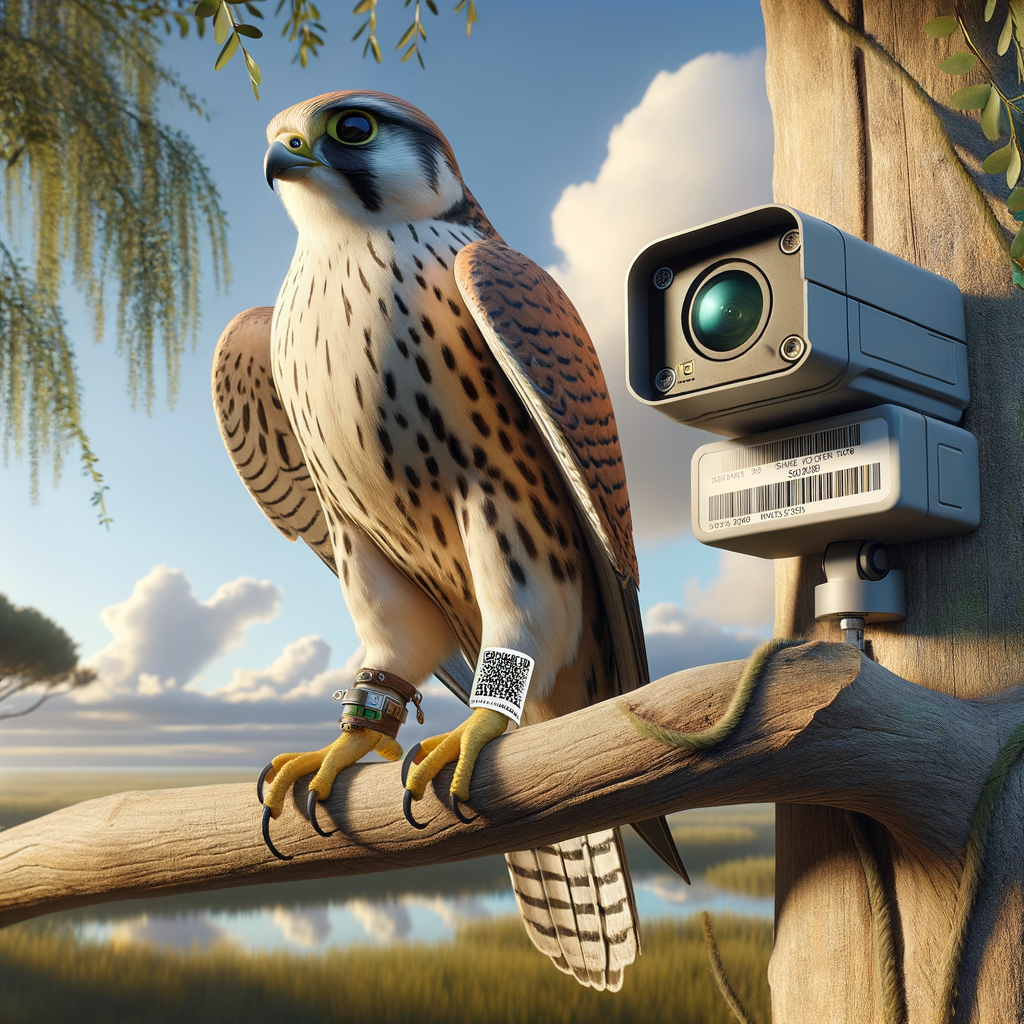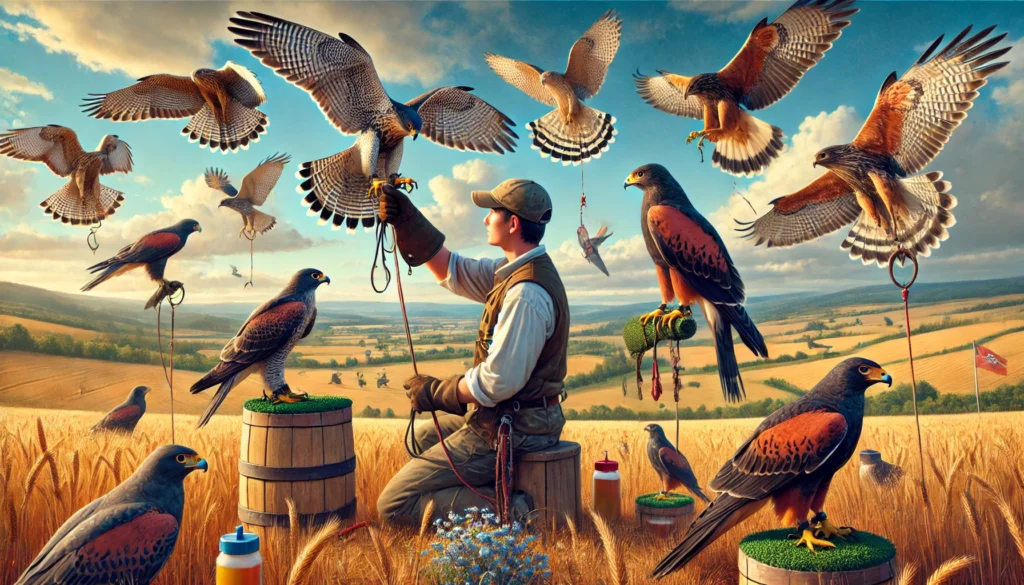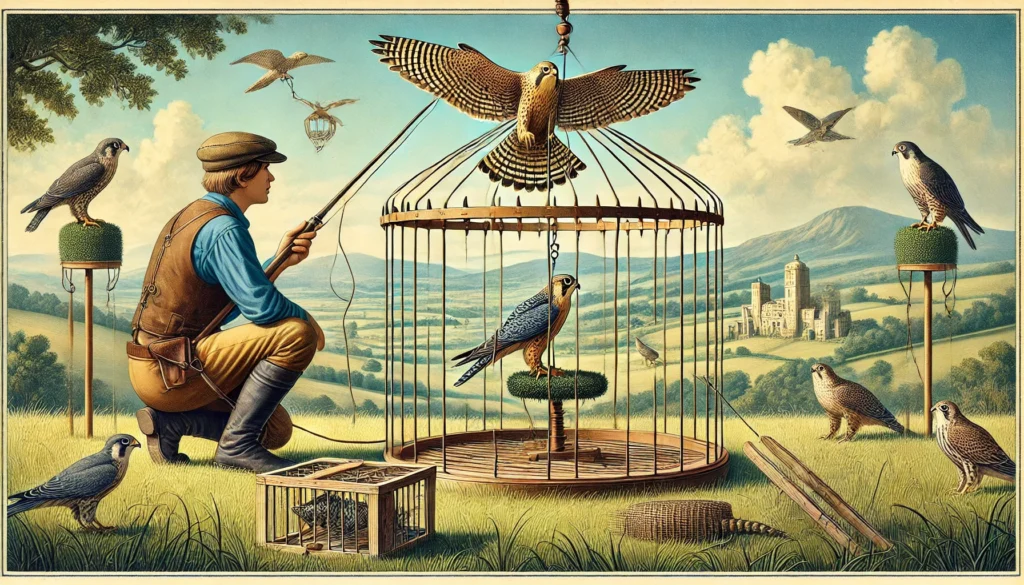Key Insights on Falconry and Wildlife Monitoring
- Importance of Conservation: Falconry helps in the conservation of wildlife by using trained falcons to monitor ecosystems.
- Training Process: Learning to train falcons is a detailed process that includes understanding their behavior and habitats.
- Technological Integration: Modern techniques, like GPS tracking, are used to monitor falcon movements and gather important data.
- Environmental Impact: Falconry provides insights into the health of the environment and helps in studying the population of various species.
- Educational Benefits: Engaging in falconry teaches valuable lessons about nature, responsibility, and wildlife conservation.
- Community Involvement: Falconry promotes involvement in local conservation efforts and helps build a community of wildlife enthusiasts.
- Traditional Practices: While integrating modern technology, falconry also respects and maintains traditional practices of bird training and care.
- Global Reach: Falconry has a worldwide presence, connecting people across different cultures and regions.
- Support for Research: The data collected through falconry contributes to scientific research and helps in creating strategies for wildlife preservation.
- Ethical Considerations: The practice of falconry emphasizes ethical treatment and care for falcons, ensuring their wellbeing while they assist in monitoring wildlife.
These points highlight the significant role of falconry in wildlife monitoring and conservation efforts across the globe.
Discovering the Hidden Treasure: Wildlife Monitoring with Falcons
Imagine this: You’re in the enchanting rolling hills of Ireland, where every nook and cranny holds a secret waiting to be uncovered. Just like finding a hidden four-leaf clover, wildlife monitoring with falcons reveals the precious gems of nature that often go unnoticed. Curious about how these majestic birds become the watchful guardians of our wild neighborhoods? Well, keep reading to uncover the magic!
At Learn Falconry, we believe that these incredible raptors are more than just symbols of strength and freedomâthey’re essential partners in protecting our environment. Falcons, with their keen eyesight and agile flight, help us keep track of wildlife populations and environmental changes. This isn’t just fascinatingâit’s crucial for maintaining the delicate balance of our ecosystems.
So, why should you stick around? By diving deeper into this article, you’ll embark on a journey of discovery where falcons play the starring role. From their impressive hunting skills to their critical role in conservation, there’s so much to explore! Trust us, just like those lush meadows of Ireland, the world of falconry is bursting with intrigue and wonder. Let’s soar into the heart of wildlife monitoring and see how these feathered friends make a difference!
Tracking Wildlife with Falcons
Imagine using the incredible skills of falcons to help scientists monitor wildlife. That’s exactly what’s happening with wildlife-monitoring-falcons. Falcons aren’t just majestic birds; they have amazing abilities that make them great for tracking wildlife. Let’s dive into how falconry for research is changing the way we study nature.
Monitoring Wildlife with Falcons
Falcons have super sharp eyes that can spot tiny movements from high up in the sky. This amazing vision helps scientists monitor wildlife in their natural habitats. Falcons can fly over large areas quickly, making them perfect for observing animals in hard-to-reach places. Because of their agility and speed, they can cover more ground than a person on foot or even most drones!
Check out our article on the history of falconry to learn how people have been using these amazing birds for centuries.
Falconry for Research
Using falconry for research isn’t just about watching animals. Falcons are trained to track wildlife and report their findings to scientists. This helps researchers gather important data about different species, their behaviors, and their habitats. Special equipment like falconry cameras and GPS trackers are attached to the falcon, so scientists can get a bird’s eye view of the area.
Training a falcon to help in science is no easy task. It requires patience and skill. Interested in how it’s done? Visit our page on training a falcon to see the detailed process.
The Role of Technology
Technology plays a big part in tracking wildlife with falcons. Modern falconry techniques use GPS trackers to follow the falcon’s flight path. This data is then used to map out the areas where animals are located. Using these advanced tools helps scientists like never before. For more on the tools used, read about our falconry equipment.
If you’re curious about different types of falcons and their unique abilities, explore our sections on species of falcons.
Conservation Efforts
The insights gained from falcon-assisted research are crucial in conservation efforts. By understanding the distribution and behavior of species, conservationists can create better plans to protect them. Falcons are not just helping hunters; they are becoming conservation heroes. Want to know more about falconry’s role in saving wildlife? Check out our information on falconry and conservation.
Using falcons for wildlife monitoring is a win-win. Falcons get to do what they love â fly high and hunt â while helping us take better care of the planet’s wildlife.
This is just the beginning! Stay tuned for more fascinating insights into the world of falconry and how it’s aiding in wildlife conservation.
For more stories and knowledge, visit our homepage, and letâs soar into the marvelous world of falconry together!
Wildlife-Monitoring Falcons: Key Insights
Falconry, the ancient practice of training birds of prey to hunt and return to their human handlers, also plays a vital role in wildlife monitoring. This work goes beyond the art of training these majestic raptors and extends significantly into preserving wildlife.
Falconry’s Role in Monitoring Wildlife
Falconers use highly trained birds, such as peregrine falcons, for monitoring wildlife. These falcons play a crucial role in tracking endangered species and gathering needed data for conservation efforts.
Regulations and Permits
Falconry is regulated strictly to ensure the sustainability of wild raptor populations. Here are examples of current regulations and permit statistics:
Utah
- Take Permits in 2024: 17 total permits, including 16 for Utah residents and 1 for nonresidents.
- Application Period: February 1 to March 31, 2024.
- Take Season: May 1 to August 31, 2024.
Montana
- Proposed regulations for the 2024-2025 biennium include the regulated take of Peregrine Falcons.
- Impact on Population: Considered insignificant and does not impact the population.
Environmental Impact
According to an environmental assessment by the US Fish and Wildlife Service:
- Falconry does not negatively impact wild populations of raptors or their prey.
Data and Observations
A robust database helps in monitoring trends and patterns, ensuring that falcon populations remain healthy. One such example is the Peregrine Falcon Observations Database:
- Compiles multiple sources of peregrine falcon observations.
- Puts data into a standard format for easy comparison and management.
Applications and Forms
For those looking to engage in falconry, various application forms are necessary. Here are some examples from the Utah Falconry Program:
- Falconry Capture Report: Tracks the capture details.
- Falconry Annual Report: Provides yearly data on activities.
- Falconry Raptor Capture Permit Application: Required for obtaining permits.
Research and Data Points
Research continues to explore the precise impacts and benefits of falconry. In 2024, data points about falconry are crucial for understanding and improving these practices:
- Falconry Regulations: Specifies take permits and regulations by state.
- Impact on Populations: Ensures there is no adverse effect.
- Database Management: Standardizes observation data for better management.
- Application Processes: Defines necessary forms and applications.
Monitoring wildlife using falcons helps maintain ecological balance and supports conservation efforts. Itâs essential to have regulated, data-driven approaches to ensure the sustainability of both the falcon populations and their prey.
Tables and Charts
Table 1: Falconry Regulations (2024)
| State | Take Permits Available | Application Period | Take Season |
|---|---|---|---|
| Utah | 17 (16 residents, 1 nonresident) | Feb 1 – Mar 31, 2024 | May 1 – Aug 31, 2024 |
| Montana | Regulated take of Peregrine Falcons | Proposed for 2024-2025 | To be determined |
Table 2: Falconry Applications in Utah
| Form Name | Purpose |
|---|---|
| Falconry Capture Report | Tracks capture details |
| Falconry Annual Report | Provides yearly data on activities |
| Falconry Raptor Capture Permit Application | Required for obtaining permits |
The Power of Wildlife-Monitoring Falcons
In our journey to explore how falcons assist in wildlife monitoring, weâve learned how crucial these magnificent birds are in tracking and studying various species. From the extensive regulations and protocols to the evidence that falconry does not harm raptor populations, itâs clear that using falcons in wildlife research offers incredible benefits. With proper management and continued research, falcons not only help us gather valuable data but also inspire awe and admiration for the natural world.
Let’s continue to support and appreciate the vital role of falcons in preserving our wildlife, knowing that our efforts today will make a significant difference for future generations.
Wildlife Monitoring Falcons: Key Questions and Answers
-
What Equipment is Needed for Wildlife Monitoring with Falcons?
When using falcons for wildlife monitoring, specific equipment is essential to ensure both the safety of the falcon and the success of the monitoring. You’ll need:
- GPS Trackers: These are used to keep track of the falconâs movements. Learn more about GPS tracker options here.
- Cameras and Monitoring Devices: These tools capture real-time data. Check out camera equipment here.
- Telemetry Systems: These help in tracking falcons over long distances. Learn more about telemetry systems here.
-
How Do Falcons Help in Wildlife Monitoring?
Falcons play a critical role in wildlife monitoring due to their keen eyesight and agile flying abilities. They can:
- Survey Large Areas: Falcons can cover extensive territories quickly, making them ideal for observing wildlife over large regions.
- Spot Hidden Wildlife: Their excellent vision allows them to detect animals that might be hidden from human sight.
- Collect Data: Equipped with cameras and GPS trackers, falcons provide valuable data that can be used for wildlife research and conservation. Discover more about the role of falcons in conservation here.
-
What Training is Required for Falcons to be Effective in Wildlife Monitoring?
Training falcons for wildlife monitoring requires patience and specific techniques:
- Basic Training Techniques: Start with basic obedience and flying commands. Learn the basics here.
- Advanced Training Methods: Gradually introduce advanced techniques to acclimate the falcon to monitoring tasks. Check advanced methods here.
- Using Technology in Training: Incorporate training tools like GPS trackers and cameras to get the falcon used to wearing and using these devices. Explore the use of technology in falcon training here.
-
What are the Legal Considerations in Using Falcons for Wildlife Monitoring?
Before using falcons for wildlife monitoring, it’s important to be aware of the legal requirements:
- Licensing Requirements: Most places require specific licenses to keep and use falcons. Find more about licensing here.
- Protected Species Regulations: Ensure that the falcon species used are not protected by law in your region. Learn about protected species here.
- International Regulations: If monitoring activities span across countries, be informed about international regulations. Read about them here.
-
How Do You Ensure the Health and Safety of Falcons Used in Wildlife Monitoring?
Keeping falcons healthy and safe is paramount:
- Regular Health Check-ups: Regular veterinary check-ups are crucial. Learn about health check-ups here.
- Proper Nutrition: Provide a balanced diet tailored to the falcon’s needs. Discover nutrition tips here.
- Injury Treatment and Prevention: Know how to treat and prevent injuries. More advice on this can be found here.



